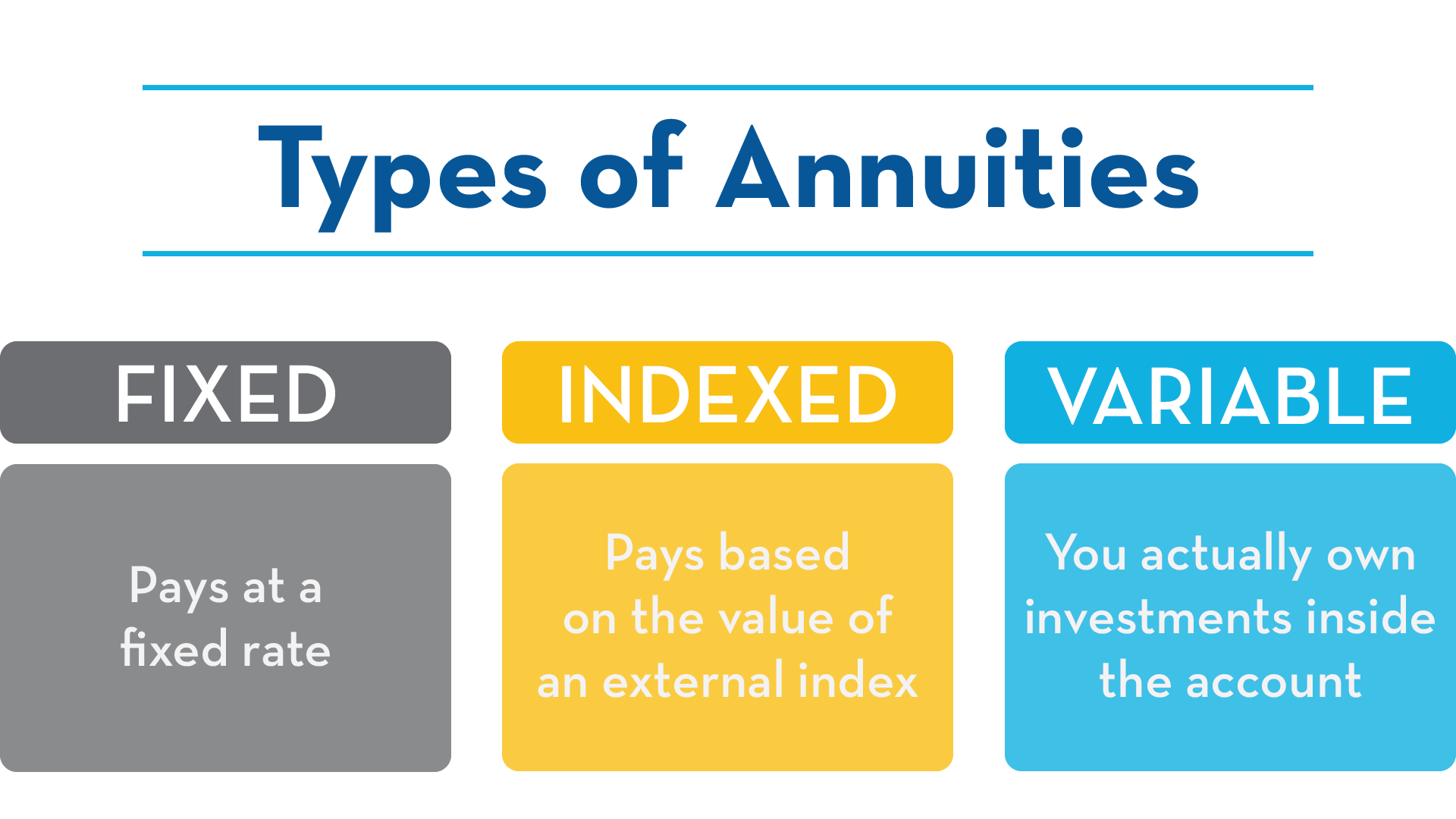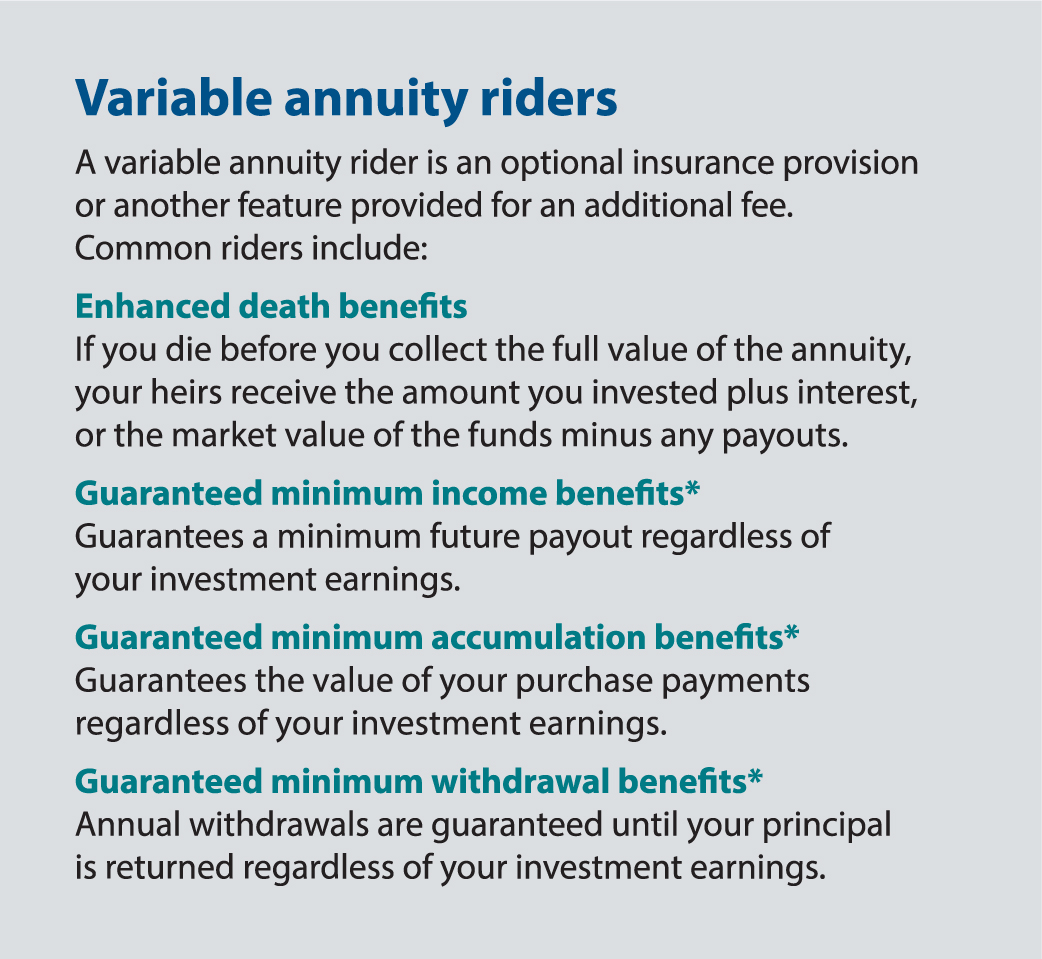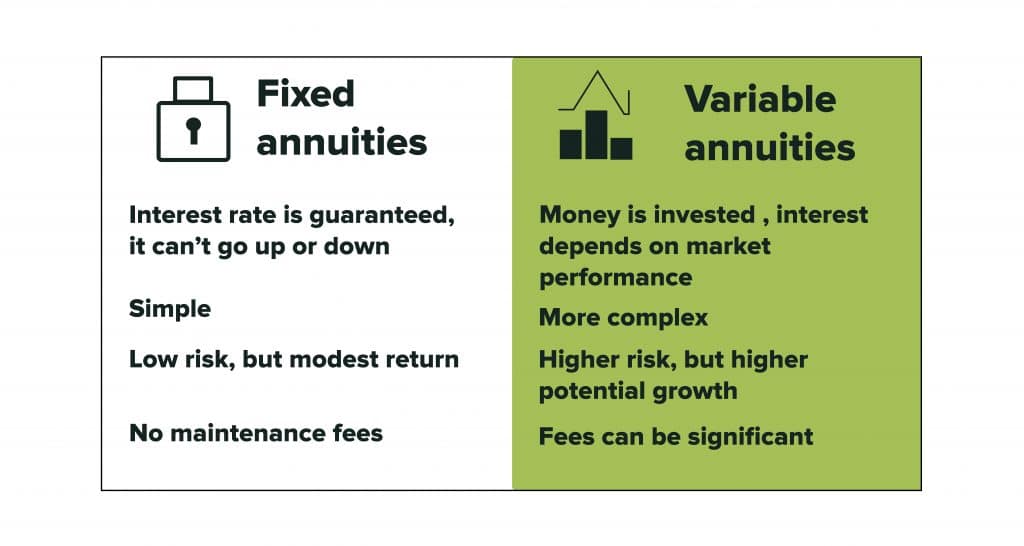All Categories
Featured
Table of Contents
Just as with a repaired annuity, the proprietor of a variable annuity pays an insurance provider a round figure or series of payments for the assurance of a collection of future repayments in return. As mentioned over, while a dealt with annuity grows at an ensured, continuous price, a variable annuity expands at a variable rate that depends upon the performance of the underlying investments, called sub-accounts.

Throughout the buildup phase, assets bought variable annuity sub-accounts grow on a tax-deferred basis and are taxed only when the agreement proprietor withdraws those incomes from the account. After the build-up phase comes the revenue phase. Over time, variable annuity assets must in theory boost in value until the contract proprietor decides he or she wish to begin withdrawing cash from the account.
One of the most substantial issue that variable annuities usually present is high expense. Variable annuities have numerous layers of costs and costs that can, in aggregate, produce a drag of approximately 3-4% of the contract's worth yearly. Below are the most common fees connected with variable annuities. This expenditure makes up the insurer for the threat that it thinks under the regards to the agreement.
Breaking Down Immediate Fixed Annuity Vs Variable Annuity A Comprehensive Guide to Fixed Annuity Or Variable Annuity Breaking Down the Basics of Fixed Indexed Annuity Vs Market-variable Annuity Pros and Cons of Various Financial Options Why Choosing the Right Financial Strategy Is Worth Considering How to Compare Different Investment Plans: Simplified Key Differences Between Different Financial Strategies Understanding the Key Features of Long-Term Investments Who Should Consider Variable Annuity Vs Fixed Indexed Annuity? Tips for Choosing Fixed Indexed Annuity Vs Market-variable Annuity FAQs About Variable Annuity Vs Fixed Annuity Common Mistakes to Avoid When Planning Your Retirement Financial Planning Simplified: Understanding Fixed Index Annuity Vs Variable Annuity A Beginner’s Guide to Smart Investment Decisions A Closer Look at How to Build a Retirement Plan
M&E expense costs are computed as a portion of the contract worth Annuity issuers pass on recordkeeping and various other management prices to the contract owner. This can be in the form of a flat annual cost or a portion of the contract worth. Administrative charges may be consisted of as part of the M&E threat cost or may be examined individually.
These fees can range from 0.1% for easy funds to 1.5% or even more for proactively handled funds. Annuity contracts can be tailored in a number of ways to offer the particular demands of the contract proprietor. Some typical variable annuity bikers include guaranteed minimal accumulation benefit (GMAB), ensured minimum withdrawal advantage (GMWB), and assured minimal revenue advantage (GMIB).

Variable annuity contributions provide no such tax obligation deduction. Variable annuities have a tendency to be extremely ineffective vehicles for passing wide range to the next generation because they do not enjoy a cost-basis modification when the original contract owner dies. When the owner of a taxed financial investment account passes away, the price bases of the financial investments held in the account are gotten used to show the marketplace rates of those investments at the time of the owner's death.
Understanding Fixed Indexed Annuity Vs Market-variable Annuity A Closer Look at How Retirement Planning Works Breaking Down the Basics of What Is Variable Annuity Vs Fixed Annuity Features of Smart Investment Choices Why Choosing the Right Financial Strategy Is Worth Considering How to Compare Different Investment Plans: Explained in Detail Key Differences Between Fixed Vs Variable Annuity Understanding the Key Features of Long-Term Investments Who Should Consider Strategic Financial Planning? Tips for Choosing Fixed Income Annuity Vs Variable Growth Annuity FAQs About Planning Your Financial Future Common Mistakes to Avoid When Planning Your Retirement Financial Planning Simplified: Understanding Your Options A Beginner’s Guide to Smart Investment Decisions A Closer Look at Deferred Annuity Vs Variable Annuity
For that reason, heirs can acquire a taxed investment portfolio with a "clean slate" from a tax perspective. Such is not the situation with variable annuities. Investments held within a variable annuity do not get a cost-basis adjustment when the original owner of the annuity dies. This suggests that any type of gathered latent gains will certainly be handed down to the annuity proprietor's heirs, in addition to the associated tax obligation worry.
One substantial problem connected to variable annuities is the potential for problems of rate of interest that may feed on the component of annuity salespeople. Unlike a monetary consultant, who has a fiduciary task to make financial investment decisions that profit the customer, an insurance coverage broker has no such fiduciary responsibility. Annuity sales are extremely financially rewarding for the insurance policy specialists that market them as a result of high upfront sales compensations.

Numerous variable annuity contracts include language which puts a cap on the percent of gain that can be experienced by specific sub-accounts. These caps avoid the annuity owner from totally participating in a part of gains that might otherwise be enjoyed in years in which markets produce significant returns. From an outsider's perspective, presumably that financiers are trading a cap on investment returns for the previously mentioned guaranteed floor on financial investment returns.
As kept in mind above, surrender costs can significantly restrict an annuity proprietor's capacity to move properties out of an annuity in the early years of the contract. Additionally, while a lot of variable annuities permit agreement proprietors to take out a defined amount during the build-up phase, withdrawals beyond this amount typically cause a company-imposed cost.
Withdrawals made from a set passion price investment choice can also experience a "market value adjustment" or MVA. An MVA changes the value of the withdrawal to show any changes in passion prices from the moment that the cash was invested in the fixed-rate alternative to the moment that it was withdrawn.

Frequently, even the salesmen that offer them do not fully comprehend exactly how they work, and so salesmen sometimes take advantage of a customer's feelings to market variable annuities instead of the benefits and viability of the products themselves. Our team believe that financiers need to totally comprehend what they own and just how much they are paying to own it.
Decoding How Investment Plans Work A Closer Look at How Retirement Planning Works What Is What Is A Variable Annuity Vs A Fixed Annuity? Pros and Cons of Fixed Indexed Annuity Vs Market-variable Annuity Why Choosing the Right Financial Strategy Can Impact Your Future How to Compare Different Investment Plans: A Complete Overview Key Differences Between Different Financial Strategies Understanding the Key Features of Tax Benefits Of Fixed Vs Variable Annuities Who Should Consider Strategic Financial Planning? Tips for Choosing Annuity Fixed Vs Variable FAQs About Planning Your Financial Future Common Mistakes to Avoid When Planning Your Retirement Financial Planning Simplified: Understanding Your Options A Beginner’s Guide to Retirement Income Fixed Vs Variable Annuity A Closer Look at Choosing Between Fixed Annuity And Variable Annuity
Nevertheless, the same can not be said for variable annuity assets held in fixed-rate financial investments. These possessions legitimately come from the insurer and would certainly for that reason go to risk if the business were to stop working. Similarly, any assurances that the insurance provider has agreed to supply, such as an ensured minimum revenue advantage, would remain in concern in case of a service failure.
Potential buyers of variable annuities must comprehend and take into consideration the monetary condition of the releasing insurance coverage firm prior to entering into an annuity agreement. While the benefits and drawbacks of numerous kinds of annuities can be questioned, the real issue surrounding annuities is that of suitability.
Nevertheless, as the claiming goes: "Caveat emptor!" This article is prepared by Pekin Hardy Strauss, Inc. Best retirement annuity options. ("Pekin Hardy," dba Pekin Hardy Strauss Riches Management) for educational purposes just and is not meant as a deal or solicitation for organization. The information and information in this short article does not comprise lawful, tax obligation, audit, financial investment, or various other specialist recommendations
Table of Contents
Latest Posts
Analyzing Annuities Variable Vs Fixed A Comprehensive Guide to Variable Vs Fixed Annuity What Is the Best Retirement Option? Pros and Cons of Fixed Annuity Vs Equity-linked Variable Annuity Why What I
Highlighting the Key Features of Long-Term Investments A Comprehensive Guide to Investment Choices Defining the Right Financial Strategy Advantages and Disadvantages of Immediate Fixed Annuity Vs Vari
Exploring Tax Benefits Of Fixed Vs Variable Annuities A Comprehensive Guide to Fixed Annuity Vs Equity-linked Variable Annuity Breaking Down the Basics of Investment Plans Benefits of Choosing the Rig
More
Latest Posts